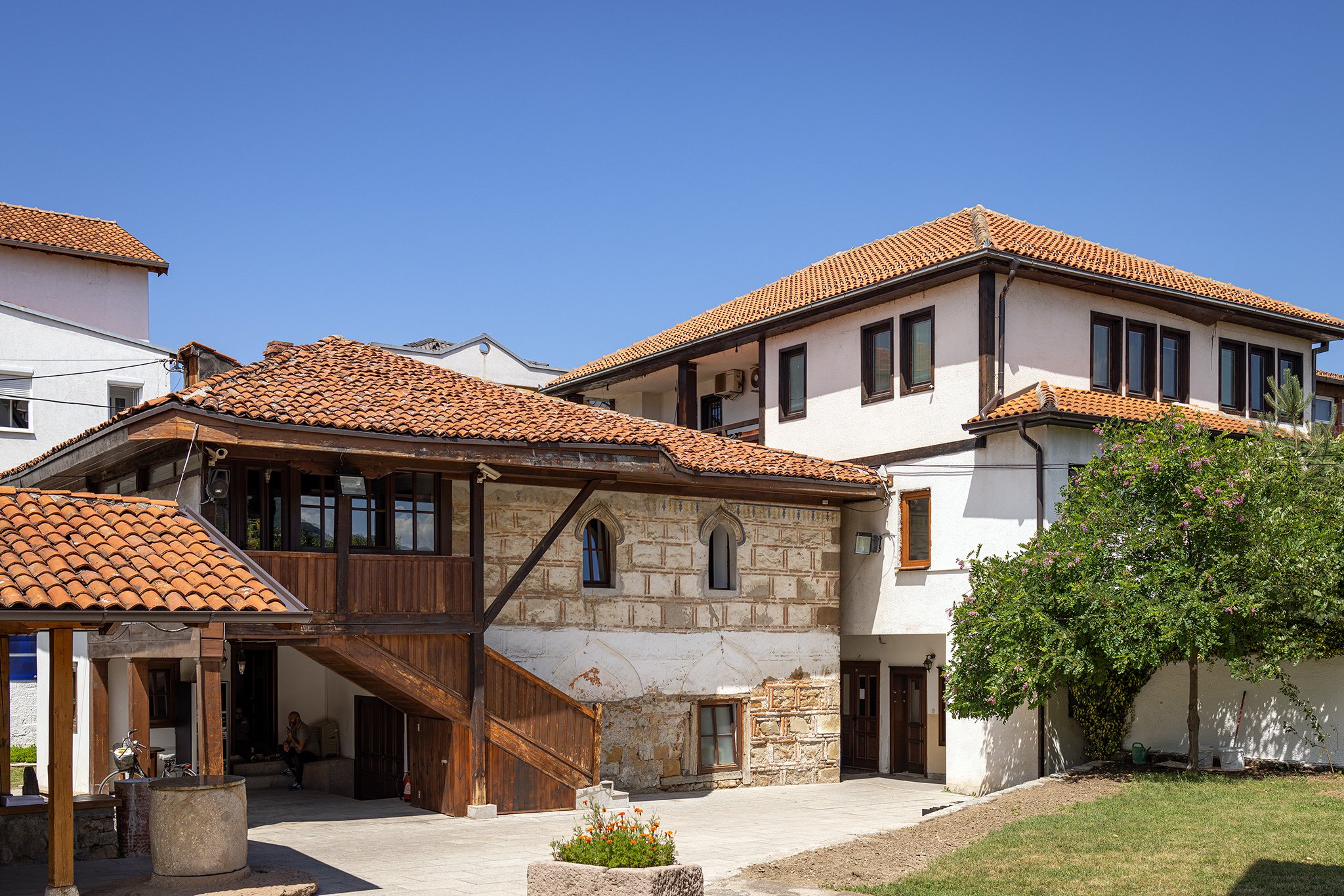
MAKTABS AND RUSDIYES IN SANDŽAK IN THE OTTOMAN PERIOD
Author: Prof. Mustafa Fetić, PhD, Faculty of Islamic Studies in Novi Pazar • Illustration: Maktab of Altun-Alem Mosque in Novi Pazar • Photo: Mirza Hasanefendić

Sandžak has been a recognizable region, interesting and attractive for many researchers, both from the East and from the West; therefore, it has been visited by many individuals, families, tribes and ethnic groups. Some have settled there, others have left it, still others claimed it and altered borders, and all of these have left an indelible trace on its constitution and have shaped it into an unavoidable hub. In Sandžak, the waqf as an act by a benefactor, to cherish him and guard him from any evil intentions, hostile eyes, and primarily with the aim to strengthen the institution of endowing and spread Allah's word turned into Islamic knowledge, without which it is impossible to imagine a quality and progressive development of the society and the community.
Reign of the Ottoman state, which ruled almost over three continents for centuries, would not have been possible without a thoroughly organized education. In this context, we will analyze some segments of the educational system in the Ottoman period, with a particular focus on maktabs and rusdiyes.
1. Maktabs
Maktabs are educational institutions which offered the fundamental religious and secular knowledge, and introduced children to the basics of ethical behavior. For a long time, education in the Ottoman state included only maktabs and madrasas. The first level of education was covered by maktabs-umumijjas, the so-called maktabs for all children, similar to the present elementary schools. They were mostly found in mahallas, next to mosques or on the corners of lanes and streets. As buildings, they were recognizable, with one or two stories, made of wood or adobe, covered with a plain roof, rarely with domes.
Maktabs were the first public place where children gathered for education purposes, and they were attended by both boys and girls. Children started school at the age of four or five, and were mostly from medium rich families, since the rich could afford private classes by muallims, who would come to their houses. Many founders of maktabs were women.
Each maktab has a muallim and a journeyman. The muallim was the primary teacher and the journeyman was his assistant. Waqifs (donors) provided funds both for the building and for salaries of teaching staff, and often food and clothes for poor children as well (Bećirbegović: 235). In the late 15th and the first half of the 16th century, the number of maktabs in Novi Pazar varied depending on agreements with muallims, e.g. about the salary and their duties. Some schools did not work for a long time and others were occasionally closed. The number of mosques in almost all the Muslim neighborhoods approximately corresponded to the number of maktabs.
The first maktabs were of religious character and their teachers were mostly imams. The most significant personalities who were to be credited for education of Muslim children and the development of science in Sandžak were mudarisses: Fadlullah-effendi in the second half of the 16th century; Muhamed-Arši Minarzade, a master of chronograms and an extremely knowledgeable in Turkish and Persian, a poet and a scientist (died in 978 Hijri year/1570A.D.); Ahmed Vali, better known under the pen name Valija Novopazarac, the author of Divan and other works in Turkish, instrumental in the promotion of science and arts, a prominent orator (died in 1007 Hijri year/1598A.D.); Nimeti, a teacher and a poet, declared a heretic by orthodox ulama (died in 1012 Hijri year/1603A.D.); Hušni, an educator and a poet (died after 1029 Hijri year/1620A.D.); Ahmed Gurbi, a prominent poet and a dervish dignitary from the 18th century; and Muhamed Nerkesi Sarajlija, the highly valued Oriental prose writer. In the 1620s, he served as a kadi in Novi Pazar, and worked as a mudarris for some time. He also served as a qadi in Gabela, Mostar, Elbasan, Banja Luka and Bitolj. He was a lecturer in several madrasas (Šabanović: 207).
In 1866, there were seven maktabs in Novi Pazat, which had 576 male pupils and 150 female pupils, which means 726 pupils altogether (Salnâme-i Vilayet-i Bosna, 85-86). Somewhat later, in 1870, there were 18 maktabs, which were attended by 900 male pupils and 110 female pupils. Statistics for other towns in Sandžak in this period was as follows: Tutin 11 maktabs, Sjenica 38 (separate or within mosques), Prijepolje 5, Rožaje 12, Bijelo Polje 12, Plav and Gusinje 10, Berane 31 (separate, in houses and within mosques), Pljevlja 6, Priboj 10 and Nova Varoš 2 sibyan-maktabs.
2. Rusdiyes
In the present education system, which exists in most countries, there is no similar schools which would completely correspond to rusdiyes. This kind of school provided middle education, which was necessary for enrolment to high schools. In 1845, Interim Council for Education declared rusdiyes schools of a middle degree (Dudić, Sandžački Azhar, 23). The first rusdiye in the Ottoman state began work in Istanbul in 1847. When the first rusdiyes achieved good results, they began to be founded in greater numbers. From 1867, rusdiyes began to be attended by non-Muslims as well. By 1869, rusdiyes were consolidated as high schools, at the level of present institutions of secondary education.
The Almanac of the Bosnia Vilayet of 1867 lists one rusdiye. In the next year already, in 1868, they were present in three towns: Novi Pazar, Pljevlje and Prijepolje (Ihsanoglu: 877). In this period, within the Ottoman system of education, there were rusdiyes in the following Sandžak towns: Novi Pazar 1, Prijepolje 1, Bijelo Polje 1, Berane 1 and Nova Varoš 1.
References:
Dudić, M. (2022), Sandžački Azhar – monografija Isa-beg Medrese, Novi Pazar.
Ihsanoglu, E (2004), Historija osmanske države i civilizacije, Sarajevo: Orijentalni institut.
Salnâme-i Vilayet-i Bosna, 1284 Hicrî Senesi (1867), Def’a 2, Saraybosna Bosna Vilayeti Litografya Destgahı, 1284 (1867).
Šabanović, H (1952), „Dvije najstarije vakufname u Bosni“, Sarajevo: Prilozi za orijentalnu filologiju.

